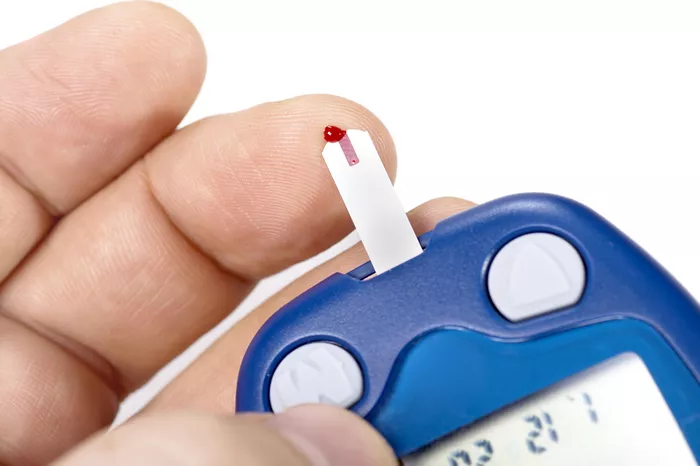Insulin resistance and diabetes mellitus are two interconnected yet distinct metabolic conditions that significantly impact an individual’s health and well-being. While both involve dysregulation of blood sugar levels and insulin action, they differ in their underlying mechanisms, diagnostic criteria, and management strategies. In this comprehensive article, we will explore the fundamental differences between insulin resistance and diabetes, delve into their pathophysiology, diagnostic criteria, and treatment modalities, and discuss the implications for overall health and well-being.
Understanding Insulin Resistance and Diabetes
1. Insulin Resistance: Insulin resistance is a condition characterized by reduced responsiveness of target tissues, such as skeletal muscle, adipose tissue, and the liver, to the actions of insulin. In individuals with insulin resistance, normal or elevated levels of insulin are required to maintain normal blood sugar levels, as tissues become less sensitive to the effects of insulin. Insulin resistance is a key feature of metabolic syndrome and is associated with an increased risk of type 2 diabetes, cardiovascular disease, and other metabolic disorders.
2. Diabetes Mellitus: Diabetes mellitus is a group of metabolic disorders characterized by elevated blood sugar levels resulting from defects in insulin secretion, insulin action, or both. The two primary types of diabetes mellitus are type 1 diabetes and type 2 diabetes. In type 1 diabetes, autoimmune destruction of pancreatic beta cells leads to an absolute deficiency of insulin production, requiring lifelong insulin therapy for survival. In type 2 diabetes, insulin resistance and relative insulin deficiency impair glucose uptake and utilization, leading to hyperglycemia and metabolic imbalances.
Key Differences Between Insulin Resistance and Diabetes
1. Pathophysiology: Insulin resistance is characterized by reduced sensitivity of target tissues to the actions of insulin, resulting in impaired glucose uptake and utilization. While compensatory mechanisms, such as increased insulin secretion by pancreatic beta cells, initially maintain normal blood sugar levels, prolonged insulin resistance can lead to beta cell dysfunction and the development of type 2 diabetes. In contrast, diabetes mellitus is characterized by elevated blood sugar levels resulting from defects in insulin secretion, insulin action, or both. In type 1 diabetes, autoimmune destruction of pancreatic beta cells leads to absolute insulin deficiency, whereas in type 2 diabetes, insulin resistance and relative insulin deficiency impair glucose metabolism.
2. Diagnostic Criteria: Insulin resistance is typically assessed using indirect measures, such as fasting insulin levels, fasting glucose-to-insulin ratio, or homeostatic model assessment of insulin resistance (HOMA-IR). However, there is no universally accepted diagnostic criterion for insulin resistance, and its assessment may vary depending on the clinical context and population studied. In contrast, diabetes mellitus is diagnosed based on specific criteria established by professional medical organizations, including the American Diabetes Association (ADA) and the World Health Organization (WHO). These criteria typically include fasting plasma glucose levels, oral glucose tolerance tests, or glycated hemoglobin (HbA1c) levels.
3. Management Strategies: Management of insulin resistance focuses on lifestyle modifications, including regular exercise, healthy diet, weight management, and pharmacological interventions aimed at improving insulin sensitivity and reducing cardiovascular risk. Pharmacological agents commonly used to treat insulin resistance include metformin, thiazolidinediones, and insulin sensitizers such as glucagon-like peptide-1 (GLP-1) receptor agonists. In contrast, management of diabetes mellitus involves a multifaceted approach that includes lifestyle modifications, oral antidiabetic medications, injectable therapies, and insulin therapy, depending on the type and severity of the disease. Individuals with type 1 diabetes require lifelong insulin therapy for survival, while those with type 2 diabetes may initially manage their condition with lifestyle modifications and oral medications but may eventually require insulin therapy as the disease progresses.
Implications for Health and Well-Being
Both insulin resistance and diabetes mellitus are associated with an increased risk of cardiovascular disease, stroke, nephropathy, neuropathy, and retinopathy, highlighting the importance of early detection and intervention. Individuals with insulin resistance should undergo regular screening for diabetes mellitus and other metabolic disorders and implement lifestyle modifications to reduce their risk. Those diagnosed with diabetes mellitus should receive comprehensive education and support to manage their condition effectively and prevent complications. Healthcare providers play a crucial role in guiding patients through the complexities of insulin resistance and diabetes mellitus, empowering them to take control of their health and well-being.
Conclusion
Insulin resistance and diabetes mellitus are two distinct yet interrelated metabolic conditions that significantly impact an individual’s health and well-being. While insulin resistance involves reduced sensitivity of target tissues to the actions of insulin, diabetes mellitus is characterized by elevated blood sugar levels resulting from defects in insulin secretion, insulin action, or both. Understanding the fundamental differences between insulin resistance and diabetes mellitus is essential for early detection, appropriate management, and prevention of complications. Through a collaborative and multidisciplinary approach to care, healthcare providers can empower individuals with insulin resistance and diabetes mellitus to achieve optimal health outcomes and improve their quality of life.
























